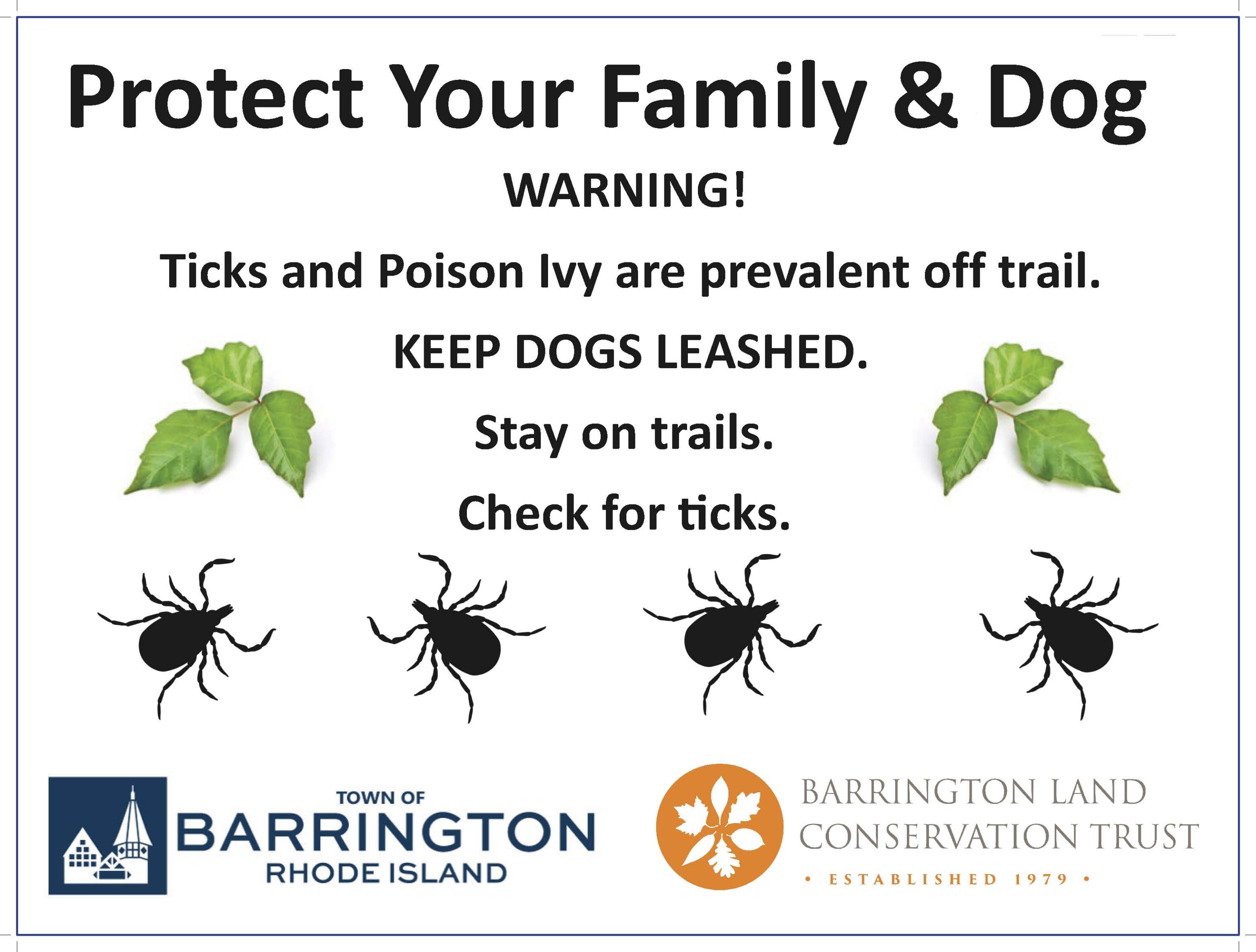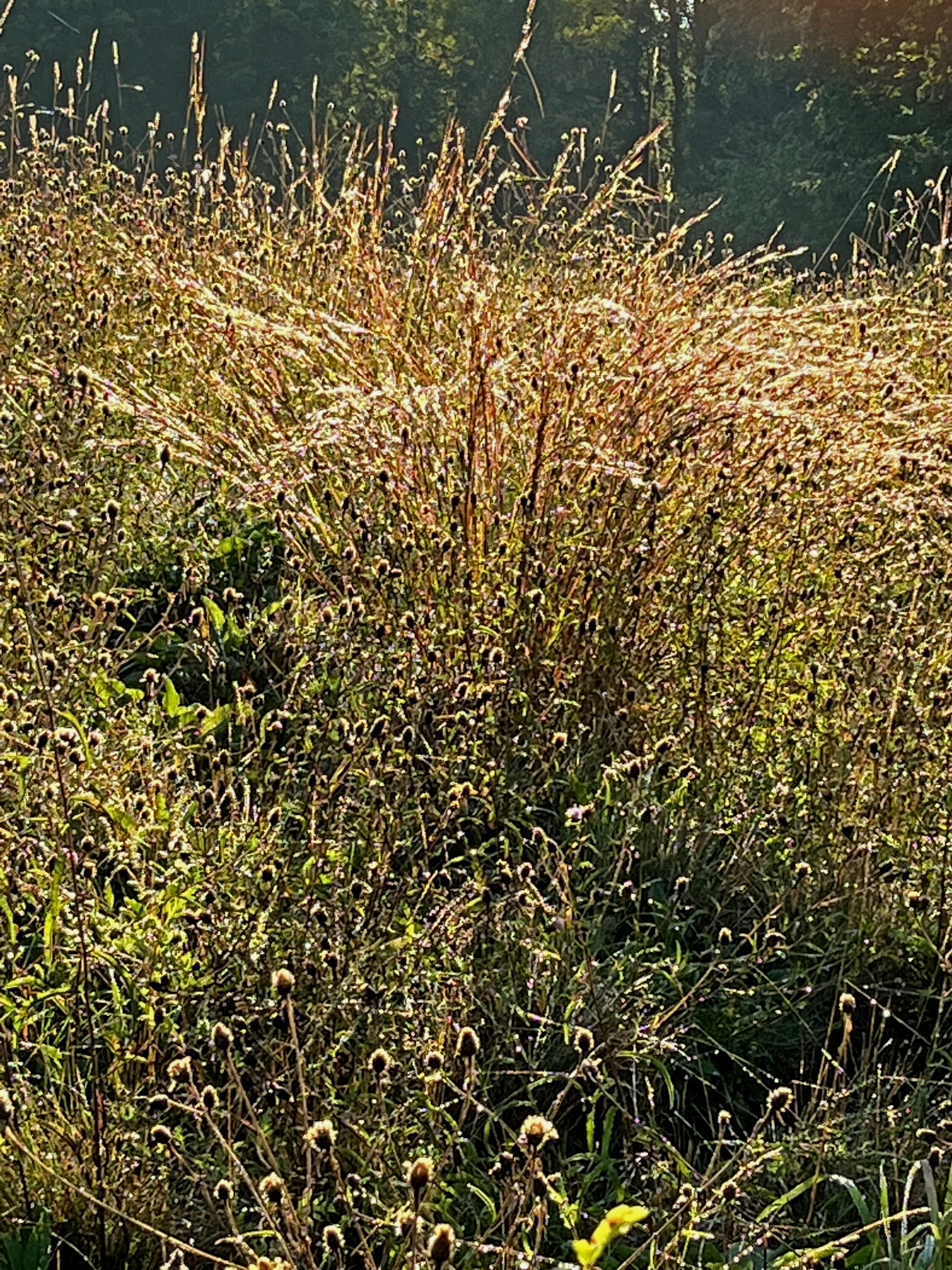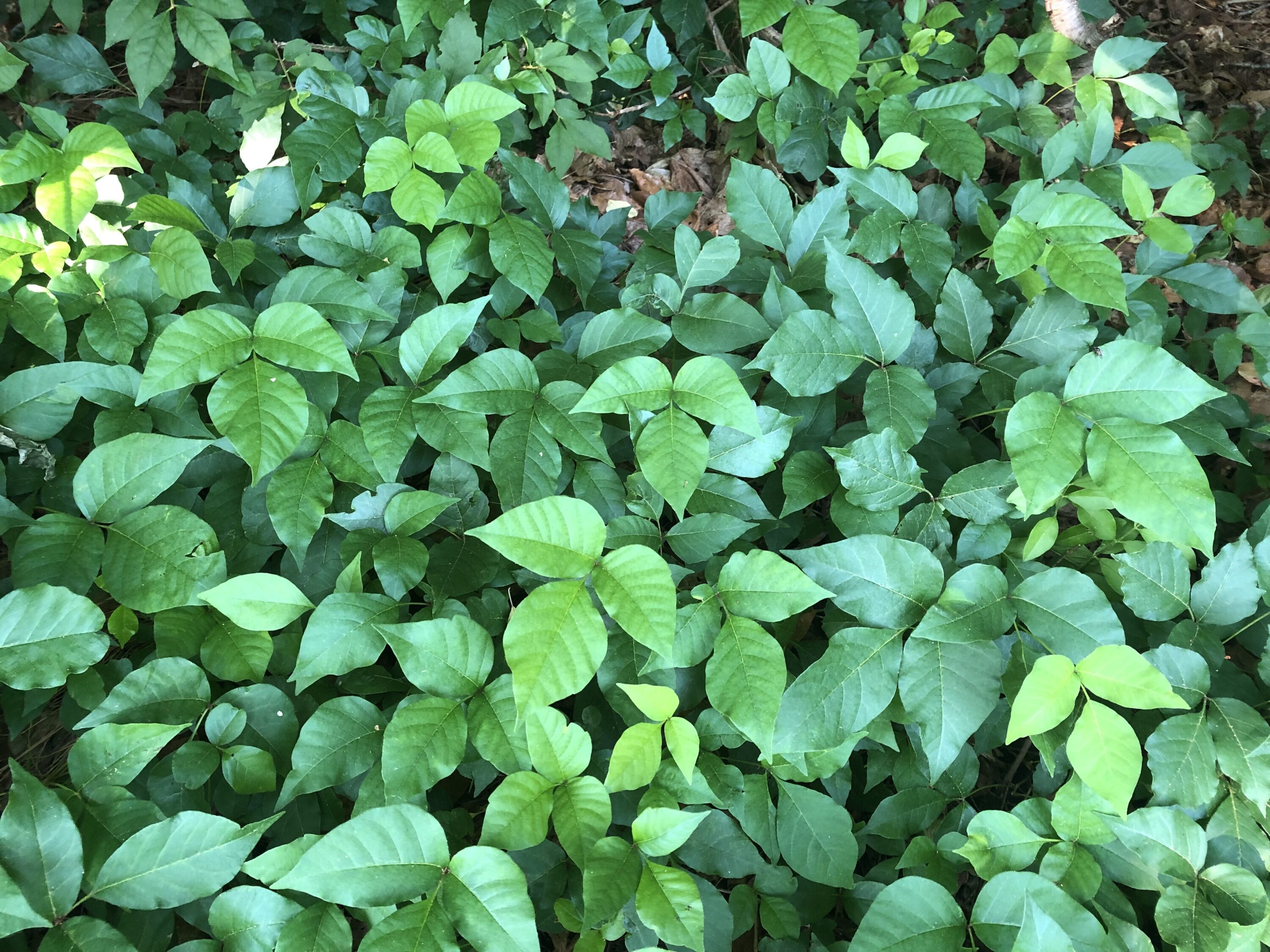Any dog lover will tell you, dogs love to run free in meadows and woods. Unclip the leash, and your dog will bound across the grassy meadow, ears flapping, tail wagging, happy as can be. But you may be putting your dog and your family at risk if you let the dog off leash in wild places.

If you walk your dog in natural areas where dogs are permitted, they must be leashed according to Town Ordinance and you should not venture off trail, where ticks and poison ivy are abundant.
Off-leash dogs can easily collect ticks as they romp through fields and forest. For dogs, tick bites might appear as small red spots on their skin under the fur, which can easily go undetected. The brown dog tick, lone star tick, American dog tick and others can carry and transmit canine ehrlichiosis, which can cause fever, lethargy, and lameness.
Dogs can carry ticks home in their fur, possibly transferring them to furniture, bedding, carpets, and eventually to the humans that live in the house. Deer ticks, which are very small and hard to spot, spread Lyme disease. In humans, Lyme disease can cause fever, rash, facial paralysis, an irregular heartbeat, and arthritis.
The presence of dogs in conservation areas can cause harm to the wild animals which make their home there.

Ticks are plentiful in the high grasses.
“It is rare to find a wildlife refuge that will allow dogs at all,” says Dr. Jennifer Trachtman of Bayside Veterinary Care in Barrington. “Even if the dogs do not actively pursue the wild residents, the prey species who populate these safe havens can be put off simply by the smell of domesticated animals. This can result in changes in feeding and reproductive activities and can profoundly impact these species.”
Before you head out for a walk with your dog, find out which natural areas allow leashed dogs. Dogs are not allowed at the Doug Rayner Wildlife Refuge at any time of year or on Town beaches from Memorial Day to Labor Day. Leashed dogs are allowed at Town-owned parks, St. Andrews Farm, Sowams Woods, and Osamequin Nature Preserve.
“In refuges where dogs are allowed, it is critical that they are brought along on leashes and stay to the posted trails,” says Dr. Trachtman. “Off the trail, dogs are more likely to encounter fecal matter or urine from small mammals and birds. There are infectious diseases and intestinal parasites that domestic pets can pick up, some of which can be transmitted to their humans. Established trails are less likely to contain debris that can cause injury to paw pads and penetrating wounds to the lower leg. While fleas and ticks are ubiquitous in our area, staying to the path (along with the typical precautions of using a veterinary-prescribed tick prevention) decreases the risk of exposure to these parasites and the diseases they carry. The nymph life stage of a tick is the infectious one. Since a nymph stage tick could fit comfortably on a pencil point, they are almost impossible to detect on any dog with any kind of coat. The safer option for your dog (and you) is to limit exposure as much as possible and stay on the posted trails.”
For more information on keeping your pet safe from ticks, visit the University of Rhode Island’s Tick Encounter website: https://web.uri.edu/tickencounter/prevention/protect-your-pets/.

Poison ivy is prevalent off trail.
Another uninvited traveler on your dog’s fur is the oils from Poison Ivy plants. While your dog will not get a rash from poison ivy, they may pass it on to you or your family if the oils brush off on your skin. There is no way to know if your dog has rubbed up against poison ivy, so the most effective way to protect yourself is to keep your dog on a leash in wild places and make sure they stay on the well-established paths.
“Our volunteers are extremely careful about poison ivy and ticks when we work in the fields at conservation areas,” says Cindy Elder, Executive Director of the Barrington Land Conservation Trust. “We wear gloves, long pants and socks pulled up over the hem of our pants, and we spray our clothing with permethrin to discourage ticks. It’s not the most stylish look, but it helps to keep us safe. I worry when I see dogs running loose in these areas. Lots of unexpected things can happen.”
Leashing your dog will protect them from altercations with other dogs. Dogs on leash often react negatively when a dog rushes at them, perhaps out of fear or a need to protect their owners. This places the owner of the leashed dog in the frightening position of trying to break up a dog fight to prevent one or both dogs from being injured. Keeping your dog close to you on a leash can also prevent them from getting close to coyotes or running out onto roadways and being struck by a car.
Friendly as your dog might be, some people and most wild animals feel threatened when approached by a dog. Your consideration in leashing your dog and staying on established trails allows everyone to enjoy the tranquility and beauty of natural places, and it helps to keep your family and dog safe.
The Barrington Land Conservation Trust owns and manages hundreds of acres of conservation property in Barrington.
